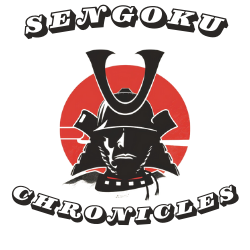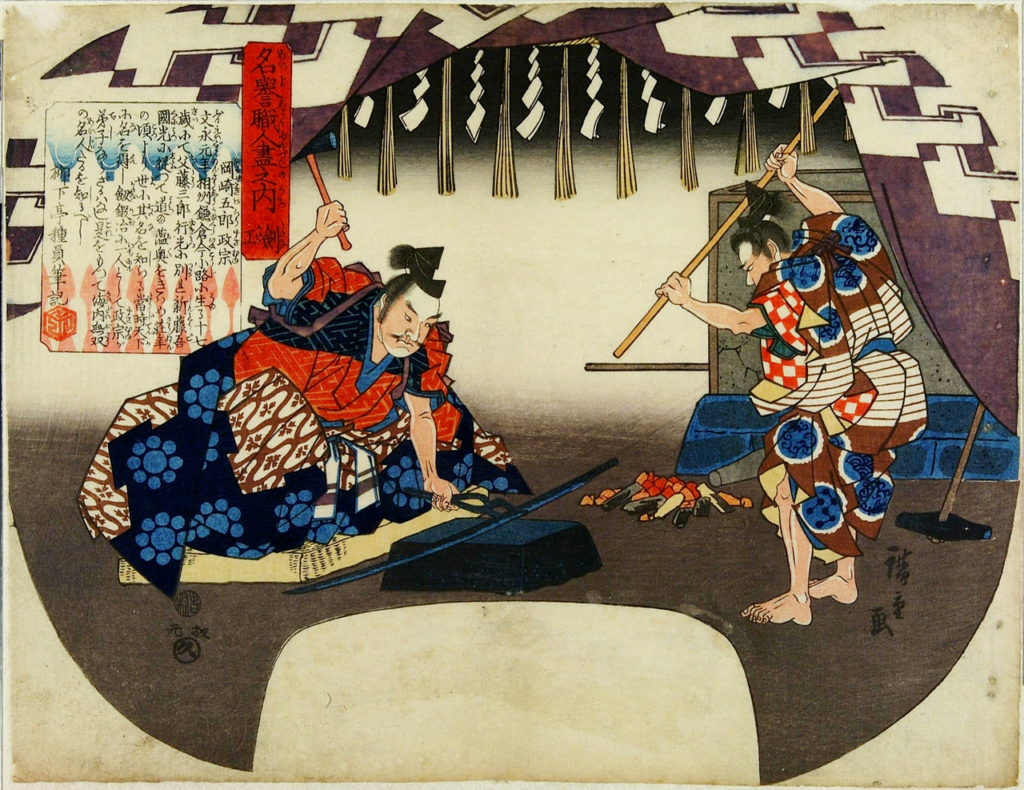Introduction
The Tenka-Goken, known as the “Five Greatest Swords under Heaven,” are legendary blades that hold a special place in Japanese history and culture. These swords are revered not only for their exceptional craftsmanship but also for the rich stories and legends that surround them. Each of these five swords represents the pinnacle of Japanese sword-making and embodies the spirit of the samurai.
Throughout the centuries, these swords have been associated with power, honor, and mysticism. They have been wielded by some of Japan’s most famous warriors and have played significant roles in both historical events and folklore. The Tenka-Goken are more than mere weapons; they are symbols of the samurai’s dedication to perfection and their unyielding spirit.
This blog post will delve into the fascinating history and significance of the Tenka-Goken. We will explore the origins and tales of each sword, examining their unique characteristics and the legends that have contributed to their legendary status. The five swords that make up the Tenka-Goken are Dojigiri Yasutsuna, Juzumaru Tsunetsugu, Mikazuki Munechika, Onimaru Kunitsuna, and Odenta Mitsuyo.
From the demon-slaying exploits of Dojigiri Yasutsuna to the healing powers attributed to Odenta Mitsuyo, each sword has a story that adds to its mystique. These tales have been passed down through generations, preserving the legacy of the Tenka-Goken and ensuring their place in the annals of Japanese history.
Join us as we journey through the captivating world of the Tenka-Goken. Discover the history, craftsmanship, and legends of these extraordinary swords that continue to inspire awe and reverence. Whether you are a history enthusiast, a martial arts practitioner, or simply intrigued by Japanese culture, the story of the Tenka-Goken offers a glimpse into a fascinating aspect of Japan’s rich heritage.
Historical Background
Concept of Tenka-Goken
- Origin and Meaning: The term Tenka-Goken translates to “Five Greatest Swords under Heaven.” These swords are considered the finest examples of Japanese swordsmanship. They were crafted by some of Japan’s most skilled swordsmiths. Each sword is revered for its historical significance and exceptional quality.
- Historical Context: The concept of the Tenka-Goken emerged during Japan’s feudal era. This period was marked by constant warfare and the rise of the samurai class. The swords served not only as weapons but also as symbols of power and prestige. They were often associated with the ruling class and important historical figures.
Importance in Japanese Culture
- Symbolism and Power: The Tenka-Goken are more than just physical objects; they embody the ideals of the samurai. These swords symbolize honor, bravery, and the relentless pursuit of perfection. Owning one of these swords was a mark of great respect and status. They were often passed down through generations, each sword carrying the legacy of its previous owners.
- Role in Samurai Tradition: The samurai viewed their swords as extensions of themselves. The Tenka-Goken, with their superior craftsmanship, were held in the highest esteem. These swords were believed to possess spiritual qualities, capable of protecting their owners and bringing victory in battle. They were also integral to various rituals and ceremonies, further cementing their importance in samurai culture.
The historical background of the Tenka-Goken provides insight into their enduring significance. These swords are not only masterpieces of craftsmanship but also symbols of the cultural and spiritual values of the samurai era. Understanding their origin and role in history helps us appreciate why they are revered as the greatest swords under heaven.
The Five Greatest Swords
Dojigiri Yasutsuna
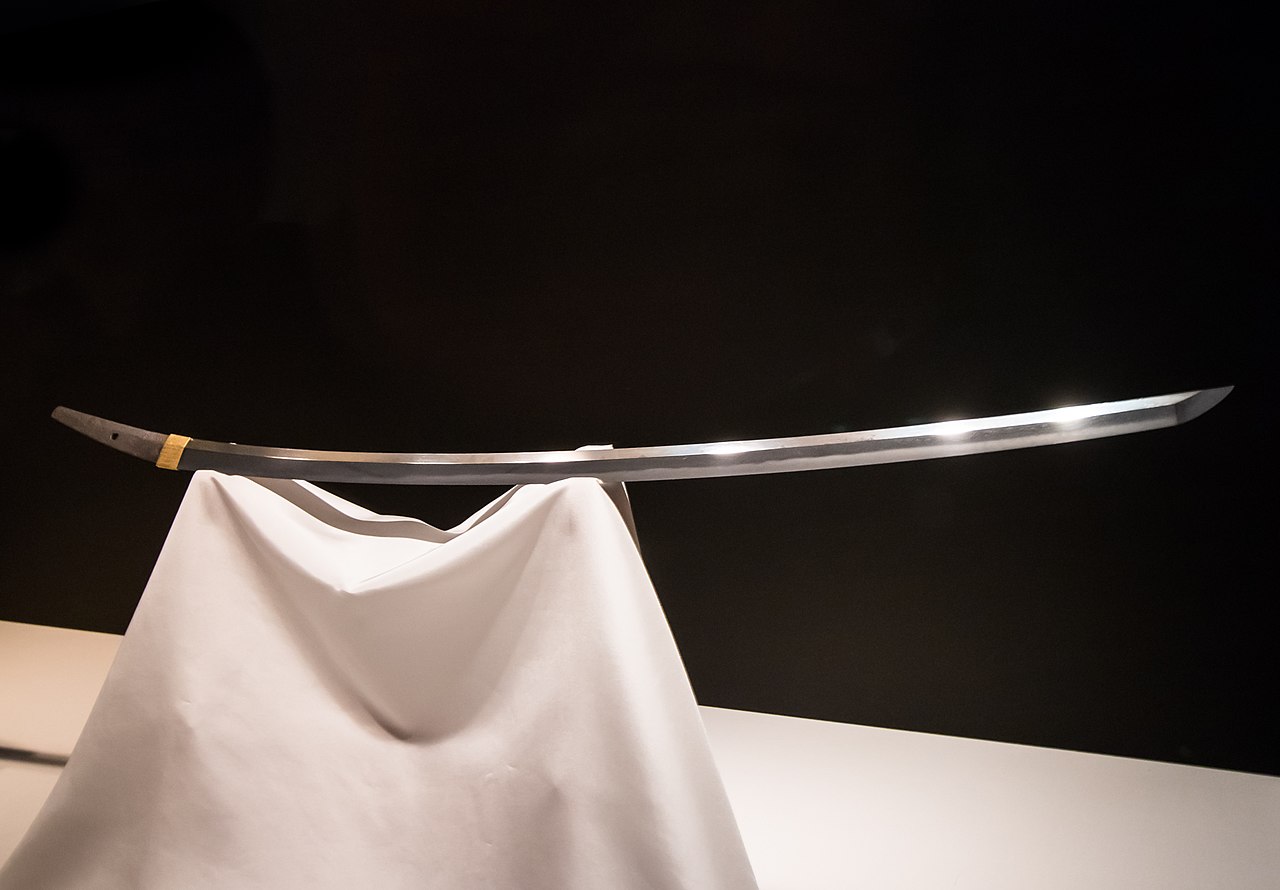
A. Historical Significance
- Creation by Swordsmith Yasutsuna: The Dojigiri Yasutsuna was forged by the renowned swordsmith Yasutsuna during the Heian period.
- Association with Minamoto no Yorimitsu: This sword is famously linked to the legendary samurai Minamoto no Yorimitsu.
B. Legendary Tales
- Slaying of the Demon Shuten-dōji: Dojigiri Yasutsuna is famed for being the sword used by Yorimitsu to slay the demon Shuten-dōji, a feat that solidified its legendary status.
C. Physical Characteristics
- Design and Craftsmanship: The sword features an elegant curvature and intricate hamon (temper line), showcasing the high level of craftsmanship.
D. Current Location and Preservation
- Museum Display: Dojigiri Yasutsuna is currently preserved in the Tokyo National Museum, where it is regarded as a National Treasure.
Juzumaru Tsunetsugu
A. Historical Significance
- Creation by Tsunetsugu: Crafted by the swordsmith Tsunetsugu, this sword holds significant historical value.
- Connection to Buddhist Monk Nichiren: The sword is believed to have been owned by the revered Buddhist monk Nichiren.
B. Legendary Tales
- The Rosary Beads Legend: Named Juzumaru, which means “Rosary,” due to a legend that it was once adorned with rosary beads, symbolizing its spiritual significance.
C. Physical Characteristics
- Design and Craftsmanship: The Juzumaru features a long, straight blade with a simple yet powerful aesthetic.
D. Current Location and Preservation
- Temple Preservation: This sword is housed in Honko-ji Temple, where it remains an important cultural artifact.
Mikazuki Munechika
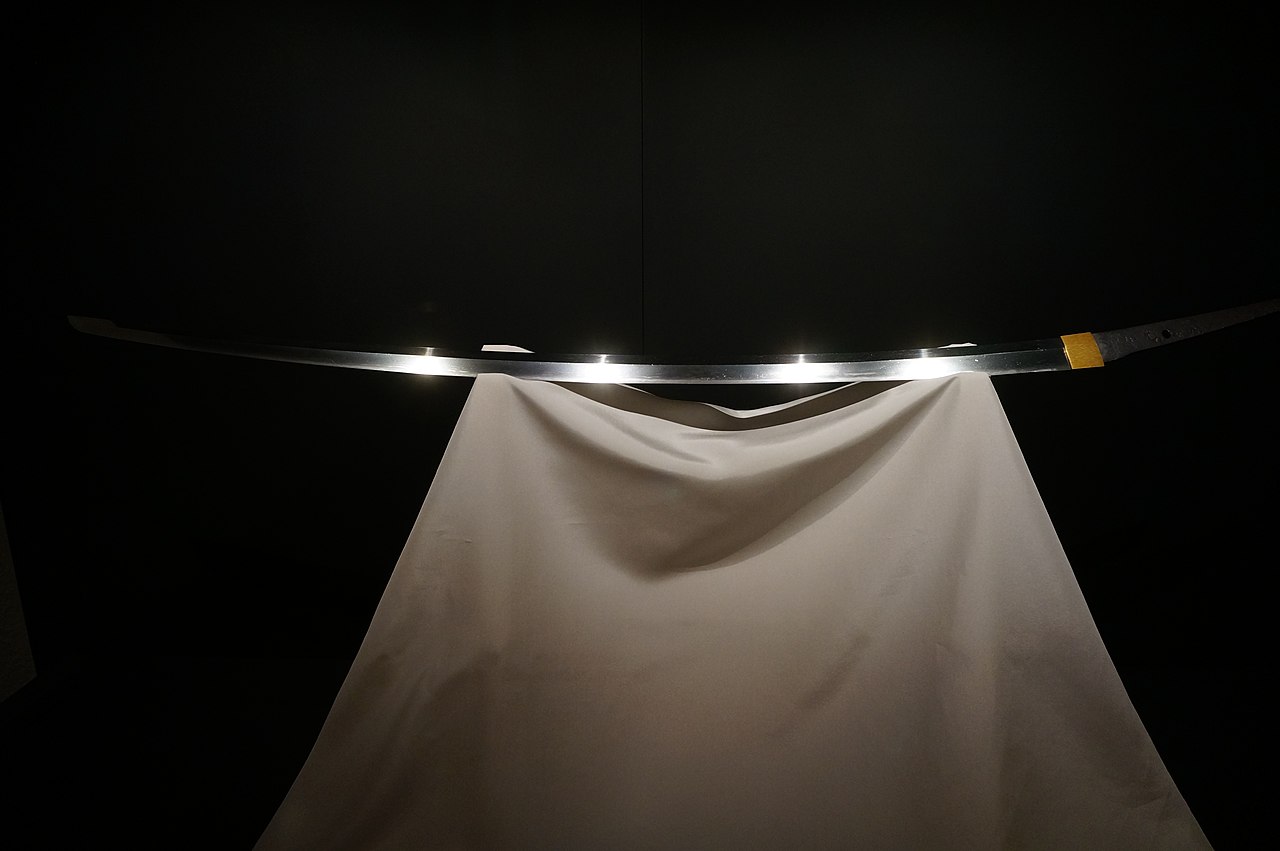
A. Historical Significance
- Creation by Sanjo Munechika: Forged by the master swordsmith Sanjo Munechika, this sword dates back to the Heian period.
B. Legendary Tales
- Crescent Moon Pattern: The name “Mikazuki” means “Crescent Moon,” derived from the distinct crescent-shaped patterns on the blade.
C. Physical Characteristics
- Design and Craftsmanship: Known for its exquisite beauty and fine details, the Mikazuki Munechika is considered one of the most beautiful swords ever made.
D. Current Location and Preservation
- Museum Display: The sword is preserved and displayed at the Tokyo National Museum, where it is celebrated as a National Treasure.
Onimaru Kunitsuna
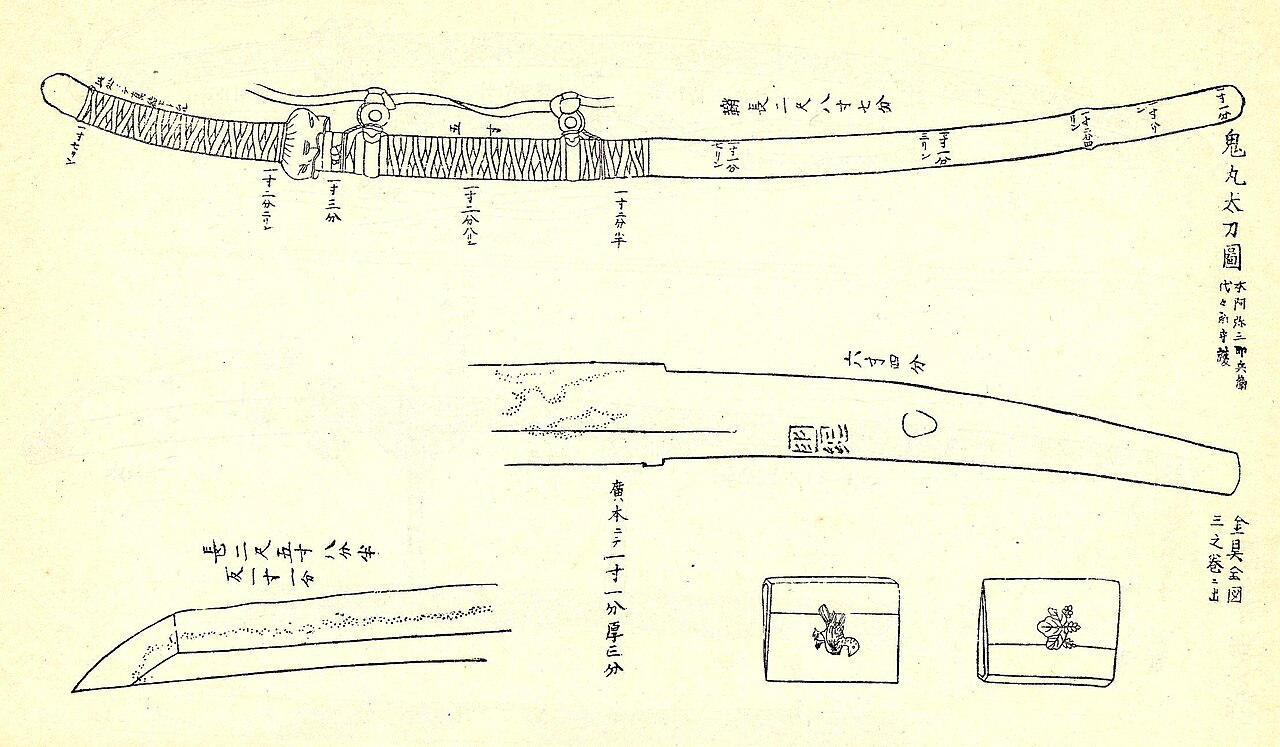
A. Historical Significance
- Creation by Kunitsuna: Crafted by the swordsmith Kunitsuna, this sword holds a prominent place in Japanese history.
- Ownership by the Ashikaga Shogunate: It was owned by the Ashikaga Shogunate, adding to its historical importance.
B. Legendary Tales
- Exorcising Evil Spirits: The Onimaru is reputed for its ability to exorcise evil spirits, a legend that enhances its mystical allure.
C. Physical Characteristics
- Design and Craftsmanship: This sword features a robust and imposing design, indicative of its powerful reputation.
D. Current Location and Preservation
- Imperial Collection: Onimaru Kunitsuna is part of the Imperial Collection, highlighting its enduring significance.
Odenta Mitsuyo
A. Historical Significance
- Creation by Mitsuyo: The sword was forged by the famed swordsmith Mitsuyo during the Kamakura period.
- Association with the Maeda Clan: It was closely associated with the Maeda Clan, one of the prominent samurai families.
B. Legendary Tales
- Healing Powers: Odenta Mitsuyo is believed to possess healing powers, a legend that has been passed down through generations.
C. Physical Characteristics
- Design and Craftsmanship: This sword is noted for its elegant and refined craftsmanship, making it a masterpiece of the Kamakura period.
D. Current Location and Preservation
- Museum Display: Odenta Mitsuyo is preserved in the Maeda Ikutokukai Foundation, ensuring its legacy is maintained.
These five swords, each with its unique history and legendary tales, represent the pinnacle of Japanese sword-making. Their enduring legacy continues to inspire and fascinate people around the world.
Cultural and Historical Significance
Influence on Japanese Art and Literature
- Depictions in Ukiyo-e and Literature: The Tenka-Goken have been celebrated in Japanese art and literature for centuries. Ukiyo-e artists, known for their woodblock prints, often depicted these legendary swords and their associated tales. These visual representations helped immortalize the swords and their stories, making them accessible to the general public. Additionally, classical Japanese literature frequently references the Tenka-Goken, with poets and writers drawing inspiration from their histories and legends. These swords symbolize the ideals of the samurai, such as honor, bravery, and the pursuit of perfection.
Role in Modern Japanese Culture
- Museums and Exhibitions: Today, the Tenka-Goken are preserved and displayed in museums across Japan. Institutions like the Tokyo National Museum and various regional museums house these national treasures, offering visitors a chance to witness these masterpieces firsthand. Exhibitions dedicated to Japanese swords often feature the Tenka-Goken, highlighting their historical and cultural significance. These exhibitions educate the public about the intricate craftsmanship and storied past of these legendary blades.
- Influence on Media and Popular Culture: The Tenka-Goken continue to influence modern media and popular culture. They appear in films, anime, and manga, often portrayed as mystical weapons with extraordinary powers. This representation keeps their legends alive and introduces them to new generations. Video games and other forms of digital media also draw inspiration from the Tenka-Goken, featuring them as powerful artifacts in their storylines. This widespread cultural presence ensures that the legacy of the Tenka-Goken remains vibrant and relevant.
The cultural and historical significance of the Tenka-Goken extends far beyond their physical form. They are symbols of Japan’s rich heritage and continue to inspire art, literature, and modern media. Through museum exhibitions and popular culture, the stories and legends of these five greatest swords are preserved and celebrated, ensuring their place in the collective memory of both Japan and the world.
Preservation and Legacy
Efforts to Preserve the Tenka-Goken
- Restoration and Care: The preservation of the Tenka-Goken involves meticulous restoration and care. Skilled craftsmen and conservators work to maintain these swords, ensuring their blades remain sharp and their structures intact. This process includes regular cleaning, oiling, and careful storage in climate-controlled environments. These efforts are essential to prevent deterioration and to preserve the swords for future generations.
- Government and Private Initiatives: Both government and private organizations play crucial roles in preserving the Tenka-Goken. The Japanese government has designated these swords as Important Cultural Properties, providing legal protection and funding for their maintenance. Additionally, private foundations and collectors contribute to preservation efforts by supporting research, exhibitions, and educational programs. These collaborative efforts ensure the continued care and appreciation of the Tenka-Goken.
Legacy in Contemporary Swordsmanship
- Influence on Modern Swordsmiths: The Tenka-Goken continue to inspire modern swordsmiths. Contemporary craftsmen study these legendary blades to understand the techniques and artistry of the ancient masters. This influence is evident in the high standards of modern Japanese sword-making, where traditional methods are preserved and refined. By emulating the craftsmanship of the Tenka-Goken, modern swordsmiths contribute to the ongoing legacy of Japanese sword-making.
- Continued Reverence and Study: The Tenka-Goken are revered not only for their historical significance but also for their role in contemporary study and practice. Martial artists and historians continue to explore the techniques and philosophies associated with these swords. Workshops, seminars, and publications dedicated to the Tenka-Goken provide valuable insights into their construction, use, and cultural impact. This continued reverence ensures that the knowledge and traditions surrounding the Tenka-Goken are passed down through generations.
The preservation and legacy of the Tenka-Goken highlight their enduring significance in Japanese culture. Through meticulous care, government and private initiatives, and the influence on modern swordsmanship, these legendary swords continue to inspire and educate. The Tenka-Goken are not only historical artifacts but also living symbols of Japan’s rich cultural heritage, embodying the timeless values of honor, craftsmanship, and dedication.
Conclusion
The Tenka-Goken, the “Five Greatest Swords under Heaven,” are more than just weapons. They are a testament to the artistry, skill, and cultural heritage of Japan. Each sword, from Dojigiri Yasutsuna to Odenta Mitsuyo, carries with it a unique history and legendary tales that have captivated people for centuries. These swords symbolize the highest ideals of the samurai—honor, bravery, and the relentless pursuit of perfection.
Throughout history, the Tenka-Goken have played significant roles in both historical events and folklore. Their stories, depicted in art and literature, have immortalized their legacy. They continue to inspire modern media, from films to video games, ensuring that their legends remain alive in contemporary culture. The preservation efforts by museums, governments, and private collectors highlight the importance of these swords as cultural treasures. Their meticulous care ensures that future generations can appreciate and learn from these masterpieces.
The influence of the Tenka-Goken extends to modern swordsmiths and martial artists. By studying these legendary blades, contemporary craftsmen and practitioners strive to uphold and refine the techniques and philosophies of the ancient masters. This continued reverence and dedication to the Tenka-Goken’s legacy keep the traditions of Japanese sword-making and martial arts vibrant and relevant.
In conclusion, the Tenka-Goken stand as enduring symbols of Japan’s rich cultural heritage. Their legacy, preserved through art, literature, and dedicated preservation efforts, continues to inspire awe and respect. Whether you are a history enthusiast, a martial artist, or simply intrigued by Japanese culture, the story of the Tenka-Goken offers a fascinating glimpse into a world of honor, skill, and timeless beauty. As we honor these legendary swords, we ensure that their stories and the values they represent remain a cherished part of our collective memory.
Further Readings
- “The Craft of the Japanese Sword” by Leon Kapp, Yoshindo Yoshihara, and Hiroko Yoshihara
- This book delves into the intricate process of sword-making, highlighting the craftsmanship and techniques that create legendary blades like the Tenka-Goken.
- “Legacies of the Sword: The Kashima-Shinryu and Samurai Martial Culture” by Karl F. Friday and Seki Humitake
- Offers a detailed exploration of the martial culture surrounding the samurai and their swords, providing context for the importance of the Tenka-Goken.
- “Samurai Swords: A Collector’s Guide to Japanese Swords” by Clive Sinclaire
- A comprehensive guide for collectors, featuring information on various famous swords, including those in the Tenka-Goken.
- “The Samurai Sword: A Handbook” by John M. Yumoto
- An excellent introductory book that provides essential information on the history, types, and care of Japanese swords.
- “Japanese Swordsmanship: Technique and Practice” by Gordon Warner and Donn F. Draeger
- Focuses on the techniques and practice of Japanese swordsmanship, giving insights into the martial arts traditions that honor swords like the Tenka-Goken.
- “The Connoisseur’s Book of Japanese Swords” by Kōkan Nagayama
- A detailed reference work that offers in-depth information on the history, types, and appraisal of Japanese swords, including the Tenka-Goken.
- “Samurai: The Weapons and Spirit of the Japanese Warrior” by Clive Sinclaire
- Explores the weapons and ethos of the samurai, providing a broader context for understanding the significance of the Tenka-Goken.
- “The Book of Five Rings” by Miyamoto Musashi
-
- Written by one of Japan’s most famous swordsmen, this classic text offers profound insights into strategy, combat, and the way of the warrior, relevant to the legacy of the Tenka-Goken.
-
